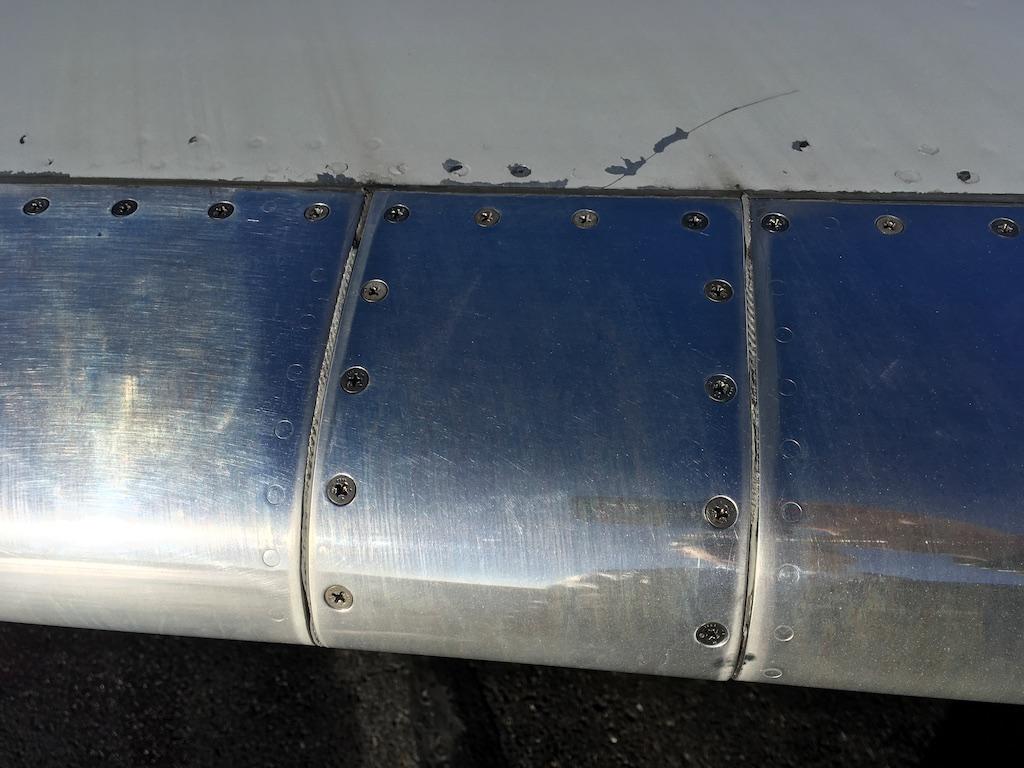
In Part 2, we discussed nose-strut inspection and bonding connections.
Why should we worry about water in the underbelly?
If your aircraft will remain overnight at a location with air temperatures that drop considerably below freezing, it is important to remove liquids that could freeze and burst their containers. Upon thawing out, these liquids could flow into various parts of the aircraft that weren’t protected against a variety of failure modes. This especially pertains to the water lines in the lav. If the pipes break, then the water will seep into the underbelly of the aircraft.
On May 9, 2007, a Dassault Falcon 20 was descending toward London Stansted Airport after a flight from Gander, Canada, when a lateral flight control restriction became apparent. The problem first appeared at about 2 hr. at cruise flight when the pilots noticed a flickering aileron TRIM warning on the primary flight display. The captain applied corrective trim, but the warning indication reappeared.
During descent, the lateral flight control problem worsened. While in a left turn, the bank angle continued to increase, and when it reached 45 deg., the captain disconnected the autopilot with the intention of flying manually. He found that roll control was very stiff when rolling to the right. He used rudder to bring the aircraft to a wing-level attitude. The pilots applied full force to both control wheels in an attempt to recover lateral control, but no movement was possible. The captain was only able to make turns through the gentle use of rudder. He accordingly restricted the bank angle to a maximum of 10 deg.
The flight crew notified ATC that they had a jammed flight control and were unable to do turns to the right and were only able to make shallow left turns. Turbulent crosswind conditions concerned the flight crew, but thanks to some apparently extraordinary airmanship, the aircraft was landed safely at Stansted and all seven occupants exited without injury.
During the ensuing investigation, a significant volume of water (at least 20 liters) was discovered below the floor panels in the forward fuselage; the water had frozen in flight and caused a restriction to the movement of the aileron trim actuator.
UK Air Accidents Investigation Branch Bulletin 2/2008 said water in aircraft bilges could come from a variety of sources: Leaking plumbing, condensation and leaking seals are the most common causes. It seems likely that the water built up in the fuselage over a period of time. The aircraft manufacturer believed a more likely source of the water in question was minor leaks in the area of the icebox drain over an extended period of time.
The manufacturer had received notification of three previous events similar in nature to that experienced by this flight crew. To prevent this problem operators were subsequently reminded that both manual and automatic drains must be checked during the daily aircraft inspection.
TKS Panels
If you fly an aircraft with a TKS ice-protection system, be aware that after removal of the TKS panels for maintenance, extreme care is required when they are replaced to make certain that the panels are aligned with laser-like precision on the proper location along the leading edge of the wing.
Additionally, make sure that the adhesive used to reseal the TKS panel to the wing does not protrude above the metal edges. That seemingly miniscule protrusion of adhesive can negatively affect the wing’s critical angle of attack (AOA). Good friends who were non-routine flight operations captains in TKS-equipped aircraft cite incidents in which the aircraft rolled to beyond 90 deg. of bank during post-maintenance test flights due to very slight misalignments of TKS panels after removal and reinstallation.
While on the topic of TKS panels, it is recommended that they be frequently operated even in the summer to keep the plastic supply tubes from cracking due to dryness as well as preventing the micro-pores from clogging up.
Astute colleagues who have paid close attention to the preflight inspections of Hawker 800XPs during aircraft acceptance checks have noted that TKS panels did not exude a proper distribution of TKS fluid during those preflight checks. This would create a condition in which part of the wing would not be deiced or anti-iced when the TKS system was applied in flight, leading to a dangerous wing condition of an ice mass building up on a portion of the wing. At this point you involuntarily become a test pilot with no certainty of the aerodynamic performance of your wing.
Wing Seals
Incidentally, during preflight inspections you should examine the condition of the aerodynamic seals on your wing, particularly on “hard wing” regional and business jets. Deteriorated aerodynamic seals, especially those near the leading edge of the wing, cause a significant loss in the maximum lift of the wing as well as a decrease in the stall AOA.
Is your aircraft allowed to operate with deteriorated wing seals? It depends. The MEL (Minimum Equipment List) or the CDL (Configuration Deviation List) for your aircraft might contain relief for minor wing-seal protrusion and deterioration.
A Sincere Thank You
We would be remiss if we didn’t point out the considerable learning lessons rendered by our aircraft maintenance technicians. Their direct hands-on practical experience and compliance with the aircraft maintenance manuals make them a wealth of authoritative information regarding the airworthiness of our aircraft.
All it took was a polite request to a maintenance supervisor, expressing of course that I didn’t want to interrupt a technician without permission during their important work. When their time and attention allowed, I was able to get a better understanding of a component. Their lessons often provided much more useful information on these important components than did aircraft manuals or ground school.
Preflight Descriptions, Part 1: https://aviationweek.com/business-aviation/safety-ops-regulation/prefli…
Preflight Descriptions, Part 2: https://aviationweek.com/business-aviation/safety-ops-regulation/prefli…



